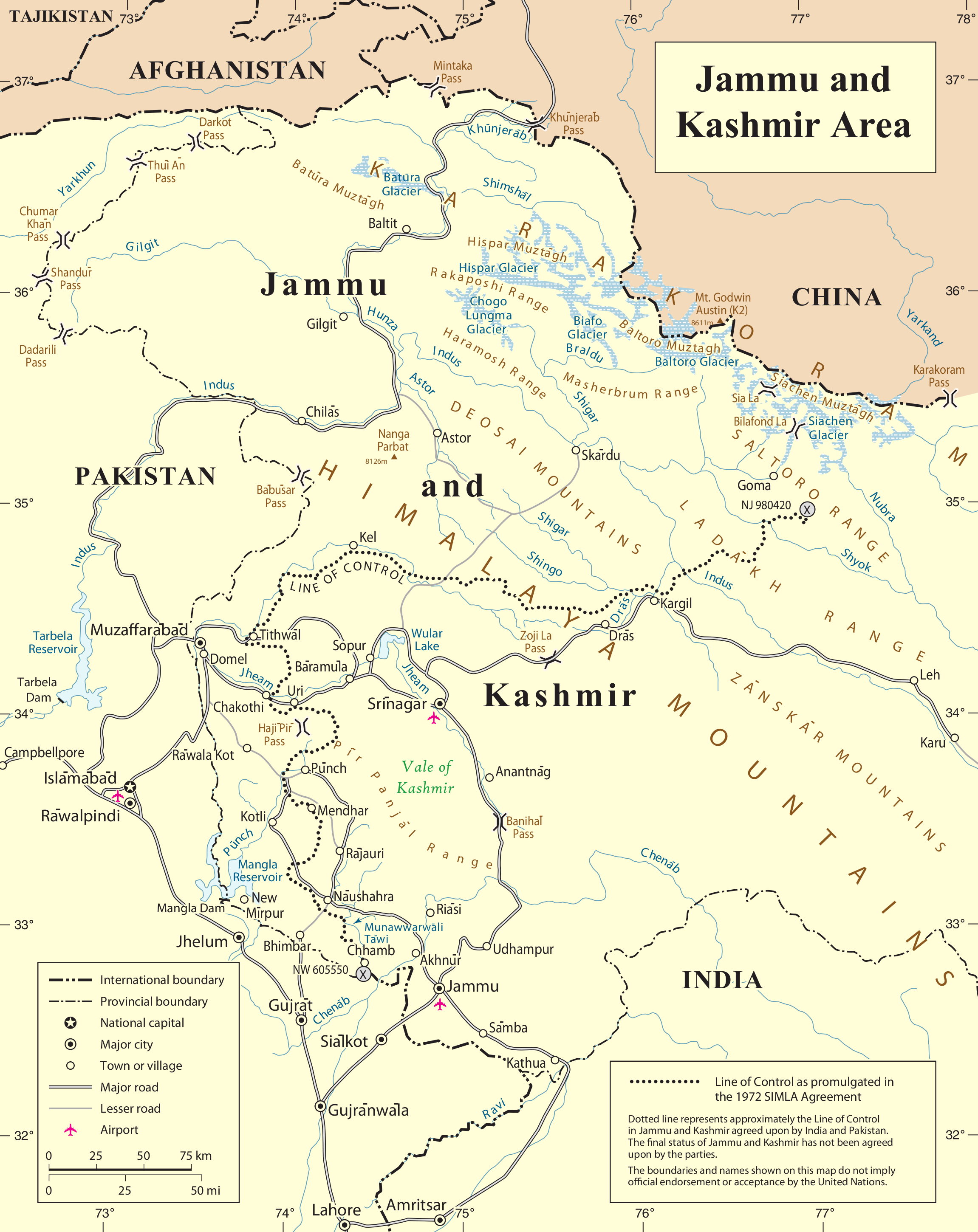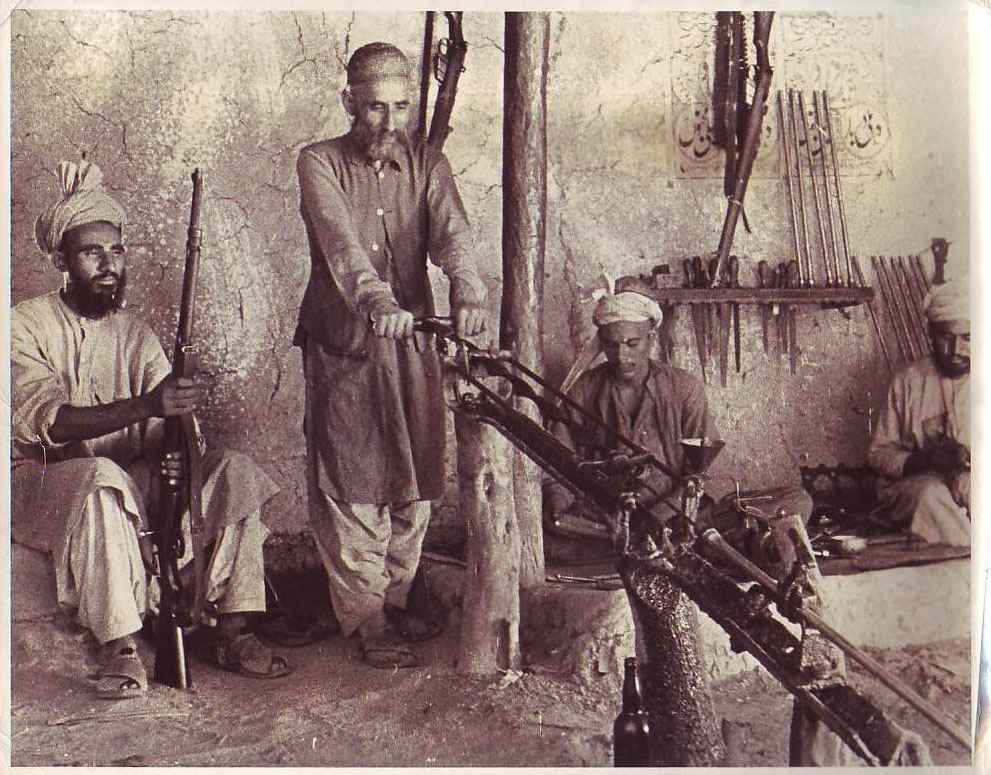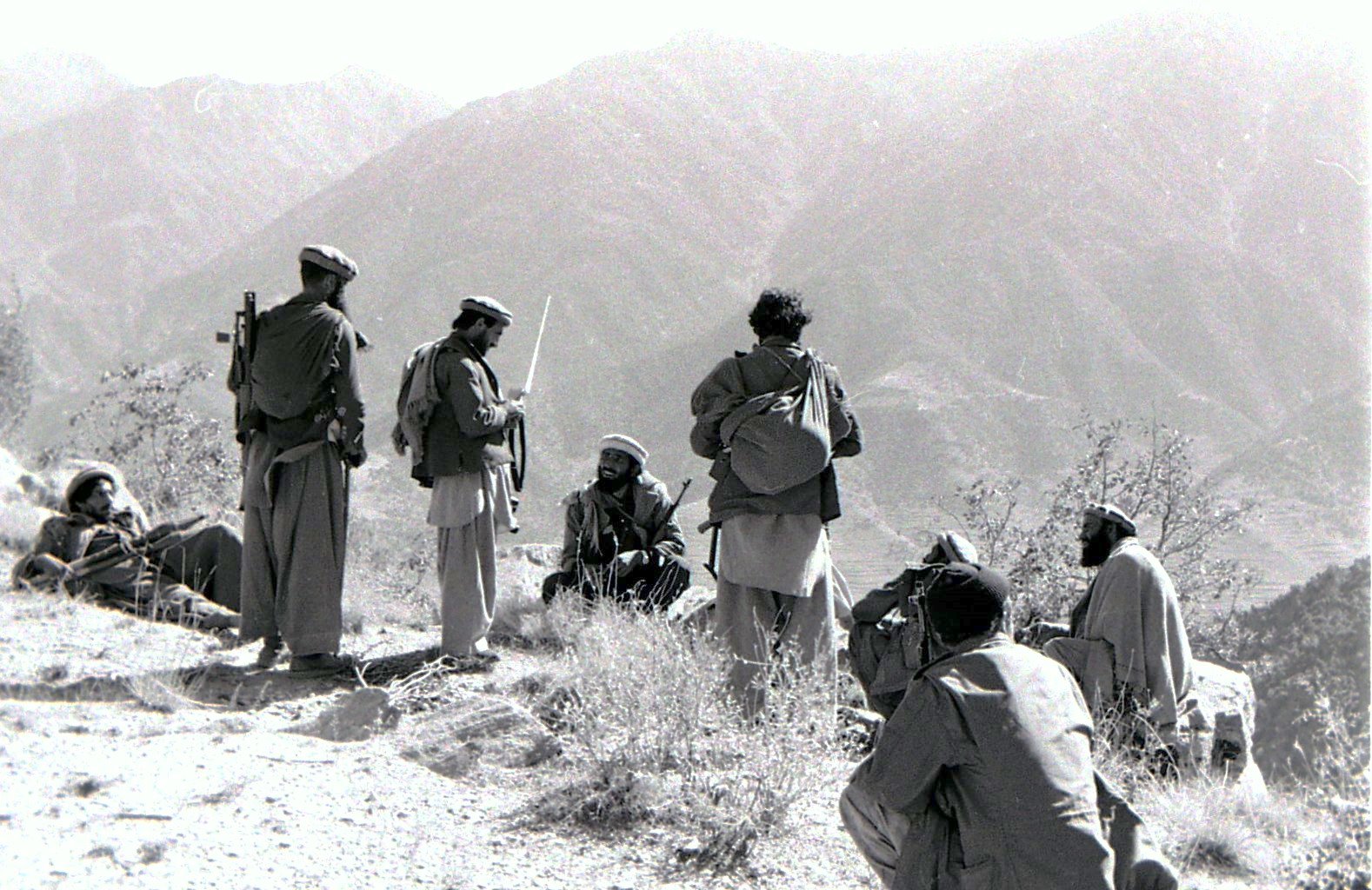|
Special Service Group Navy
The Pakistan Navy Special Service Group abbreviated SSGN or simply Navy seals, is the special operations force tasked with the conducting the small-unit based military operations in all environmental formats of the sea, air, and land by adopting to the tactics of the unconventional warfare. The command and control of the Special Service Group (Navy) falls under the responsibility of the Naval Strategic Forces Command and its personnel are directly recruited into ISI's Covert Action Division (CAD) upon their retirements from their military service. There is no official report on the actual strength or their military missions since their operational works are subjected to the secrecy by the federal government of Pakistan; knowledge of their works and tactics known in public through the only authorized media works and nonfiction works by the navy veteran. History Birth of the Navy SSG After the second war with India in 1965, the Pakistan Navy recognized the need for establish ... [...More Info...] [...Related Items...] OR: [Wikipedia] [Google] [Baidu] |
Pakistan Navy
ur, ہمارے لیے اللّٰہ کافی ہے اور وہ بہترین کارساز ہے۔ English: Allah is Sufficient for us - and what an excellent (reliable) Trustee (of affairs) is He!(''Qur'an, 3:173'') , type = Navy , role = , size = 54,100 total active personnel * 35,300 active-duty officers and sailors * 5,000 reserve force * 12,000 Marines * 4,000 Maritime Security Agency * 2,800 civilian personnel154 ships and 85 aircraft , command_structure = Pakistan Armed Forces , garrison = Naval Headquarters (NHQ), Islamabad, ICT , garrison_label = Garrison , colors = , colors_label = Colours , march = , mascot = , anniversaries = Navy Day: 8 September , equipment = 10 Frigates 2 Destroyers 6 Corvettes 5 ... [...More Info...] [...Related Items...] OR: [Wikipedia] [Google] [Baidu] |
Siachen Conflict
The Siachen conflict, sometimes referred to as the Siachen Glacier conflict or the Siachen War, was a military conflict between India and Pakistan over the disputed Siachen Glacier region in Kashmir. The conflict was started in 1984 by India's successful capture of the Siachen Glacier as part of Operation Meghdoot, and continued with Operation Rajiv in 1987. India took control of the Siachen Glacier and its tributary glaciers, as well as all the main passes and heights of the Saltoro Ridge immediately west of the glacier, including Sia La, Bilafond La, and Gyong La. Pakistan controls the glacial valleys immediately west of the Saltoro Ridge. A cease-fire went into effect in 2003, but both sides maintain a heavy military presence in the area. The conflict has resulted in thousands of deaths, mostly due to natural hazards. External commentators of have characterized it as pointless, given the perceived uselessness of the territory, and indicative of bitter stubbornness on ... [...More Info...] [...Related Items...] OR: [Wikipedia] [Google] [Baidu] |
Operation Rah-e-Nijat
The Operation Rah-e-Nijat ("Path to Salvation"; ur, آپریشن راہ نجات) was a strategic offensive military operation by the Joint Chiefs of Staff Committee, unified command of Pakistan Armed Forces against the Tehrik-i-Taliban Pakistan (TTP) and their extremist allies in the South Waziristan area of the Federally Administered Tribal Areas that began on June 19, 2009; a major ground-air offensive was subsequently launched on October 17. It became the integral part of the War in North-West Pakistan, war in Western fronts which led to the encirclement and destruction of Taliban forces in the region, although the Taliban leadership escaped to lawless areas of neighboring Afghanistan. The operation was intended to finish the senior Taliban leadership and bring the lawless areas back to government control, however the leadership escaped to Afghanistan whilst areas came back under the Pakistan government control. Planning for the operation began on June 16, 2009 after succe ... [...More Info...] [...Related Items...] OR: [Wikipedia] [Google] [Baidu] |
Operation Black Thunderstorm
Operation Black Thunderstorm was an aggressive military operation that commenced on April 26, 2009 conducted by the Pakistan Army, with the aim of retaking Buner, Lower Dir, Swat and Shangla districts from the Tehrik-i-Taliban Pakistan after the militants took control of them since the start of the year. Background A temporary ceasefire was called in the Malakand region on February 16, 2009. The provincial government agreed to allow the implementation of Sharia in the region once violence had stopped. Sufi Muhammad traveled to Swat to discuss peace with Fazlullah and his followers, who agreed to observe the ceasefire. On February 24, 2009 Muslim Khan, spokesperson of the Tehrik-i-Taliban Pakistan (TTP) publicly announced that his group would observe an indefinite ceasefire. The ANP, the governing party of the Khyber Pakhtunkhwa sent the bill to President Asif Ali Zardari, who delayed signing it into law until "the writ of the government adbeen established." Soon after tha ... [...More Info...] [...Related Items...] OR: [Wikipedia] [Google] [Baidu] |
War In North-West Pakistan
The insurgency in Khyber Pakhtunkhwa, also known as the War in North-West Pakistan or Pakistan's war on terror, is an ongoing armed conflict involving Pakistan, and Islamist militant groups such as the Tehrik-i-Taliban Pakistan (TTP), Jundallah, Lashkar-e-Islam (LeI), TNSM, al-Qaeda, and their Central Asian allies such as the IS–Khorasan (IS-K), Islamic Movement of Uzbekistan, East Turkistan Movement, Emirate of Caucasus, and elements of organized crime.Varun Vira and Anthony Cordesma"Pakistan: Violence versus Stability: A Net Assessment." '' Center for Strategic and International Studies'', 25 July 2011. Formerly a war, it is now a low-level insurgency as of 2017. The armed conflict began in 2004 when tensions rooted in the Pakistan Army's search for al-Qaeda fighters in Pakistan's mountainous Waziristan area (in the Federally Administered Tribal Areas) escalated into armed resistance. [...More Info...] [...Related Items...] OR: [Wikipedia] [Google] [Baidu] |
War In Afghanistan (2001–present)
War in Afghanistan, Afghan war, or Afghan civil war may refer to: * Conquest of Afghanistan by Alexander the Great (330 BC – 327 BC) * Muslim conquests of Afghanistan (637–709) *Conquest of Afghanistan by the Mongol Empire (13th century), see also Mongol invasion of Central Asia (1216–1222) * Mughal conquests in Afghanistan (1526) * Afghan Civil War (1863–1869), a civil war between Sher Ali Khan and Mohammad Afzal Khan's faction after the death of Dost Mohammad Khan * Anglo−Afghan Wars (first involvement of the British Empire in Afghanistan via the British Raj) ** First Anglo−Afghan War (1839–1842) ** Second Anglo−Afghan War (1878–1880) ** Third Anglo−Afghan War (1919) * Panjdeh incident (1885), first major incursion into Afghanistan by the Russian Empire during the Great Game (1830–1907) with the United Kingdom of Britain and Ireland * First Afghan Civil War (1928–1929), revolts by the Shinwari and the Saqqawists, the latter of whom managed to take ove ... [...More Info...] [...Related Items...] OR: [Wikipedia] [Google] [Baidu] |
War On Terror
The war on terror, officially the Global War on Terrorism (GWOT), is an ongoing international counterterrorism military campaign initiated by the United States following the September 11 attacks. The main targets of the campaign are militant Islamist and Salafi-Jihadist armed organisations such as Al-Qaeda, the Islamic State and their international affiliates; which are waging military insurgencies to overthrow governments of various Muslim countries. The "war on terror" uses war as a metaphor to describe a variety of actions which fall outside the traditional definition of war taken to eliminate international terrorism. 43rd President of the United States George W. Bush first used the term "war on terrorism" on 16 September 2001, and then "war on terror" a few days later in a formal speech to Congress. Bush indicated the enemy of the war on terror as "a radical network of terrorists and every government that supports them." The initial conflict was aimed at al-Qaeda, ... [...More Info...] [...Related Items...] OR: [Wikipedia] [Google] [Baidu] |
Pakistan's Military Assistance To Sri Lanka
The military history of Pakistan ( ur, ) encompasses an immense panorama of conflicts and struggles extending for more than 2,000 years across areas constituting modern Pakistan and greater South Asia. The history of the modern-day military of Pakistan began in 1947, when Pakistan achieved its independence as a modern nation. The military holds a significant place in the history of Pakistan, as the Pakistani Armed Forces have played, and continue to play, a significant role in the Pakistani establishment and shaping of the country. Although Pakistan was founded as a democracy after its independence from the British Raj, the military has remained one of the country's most powerful institutions and has on occasion overthrown democratically elected civilian governments on the basis of self-assessed mismanagement and corruption. Successive governments have made sure that the military was consulted before they took key decisions, especially when those decisions related to the Kashm ... [...More Info...] [...Related Items...] OR: [Wikipedia] [Google] [Baidu] |
United Nations Protection Force
The United Nations Protection Force (UNPROFOR; also known by its French acronym FORPRONU: ''Force de Protection des Nations Unies'') was the first United Nations peacekeeping force in Croatia and in Bosnia and Herzegovina during the Yugoslav Wars. The force was formed in February 1992 and its mandate ended in March 1995, with the peacekeeping mission restructuring into three other forces (the United Nations Preventive Deployment Force (UNPREDEP) in Macedonia, and the United Nations Confidence Restoration Operation in Croatia (UNCRO) in Croatia, with restructured UNPROFOR operations ongoing in Bosnia and Herzegovina until their replacement by NATO and EU missions in December 1995). Personnel UNPROFOR was composed of nearly 39,000 personnel. It consisted of troops from Argentina, Australia, Bangladesh, Belgium, Brazil, Canada, Colombia, Czech Republic, Denmark, Egypt, Estonia, Finland, France, Germany, Ghana, India, Indonesia, Ireland, Italy, Jordan, Kenya, Lithuania, Luxembou ... [...More Info...] [...Related Items...] OR: [Wikipedia] [Google] [Baidu] |
Bosnian War
The Bosnian War ( sh, Rat u Bosni i Hercegovini / Рат у Босни и Херцеговини) was an international armed conflict that took place in Bosnia and Herzegovina between 1992 and 1995. The war is commonly seen as having started on 6 April 1992, following a number of earlier violent incidents. The war ended on 14 December 1995 when the Dayton accords were signed. The main belligerents were the forces of the Republic of Bosnia and Herzegovina and those of Herzeg-Bosnia and Republika Srpska, proto-states led and supplied by Croatia and Serbia, respectively. The war was part of the breakup of Yugoslavia. Following the Slovenian and Croatian secessions from the Socialist Federal Republic of Yugoslavia in 1991, the multi-ethnic Socialist Republic of Bosnia and Herzegovina – which was inhabited by mainly Muslim Bosniaks (44%), Orthodox Serbs (32.5%) and Catholic Croats (17%) – passed a referendum for independence on 29 February 1992. Political representatives ... [...More Info...] [...Related Items...] OR: [Wikipedia] [Google] [Baidu] |
Soviet–Afghan War
The Soviet–Afghan War was a protracted armed conflict fought in the Democratic Republic of Afghanistan from 1979 to 1989. It saw extensive fighting between the Soviet Union and the Afghan mujahideen (alongside smaller groups of anti-Soviet Maoism, Maoists) after the former militarily intervened in, or launched an invasion of, Afghanistan to support the local pro-Soviet government that had been installed during Operation Storm-333. Most combat operations against the mujahideen took place in the Afghan countryside, as the country's urbanized areas were entirely under Soviet control. While the mujahideen were backed by various countries and organizations, the majority of their support came from Pakistan, Saudi Arabia, the United States, the United Kingdom, China, and Iran; the American pro-mujahideen stance coincided with a sharp increase in bilateral hostilities with the Soviets during the Cold War (1979–1985), Cold War. The conflict led to the deaths of between 562,000 and ... [...More Info...] [...Related Items...] OR: [Wikipedia] [Google] [Baidu] |








